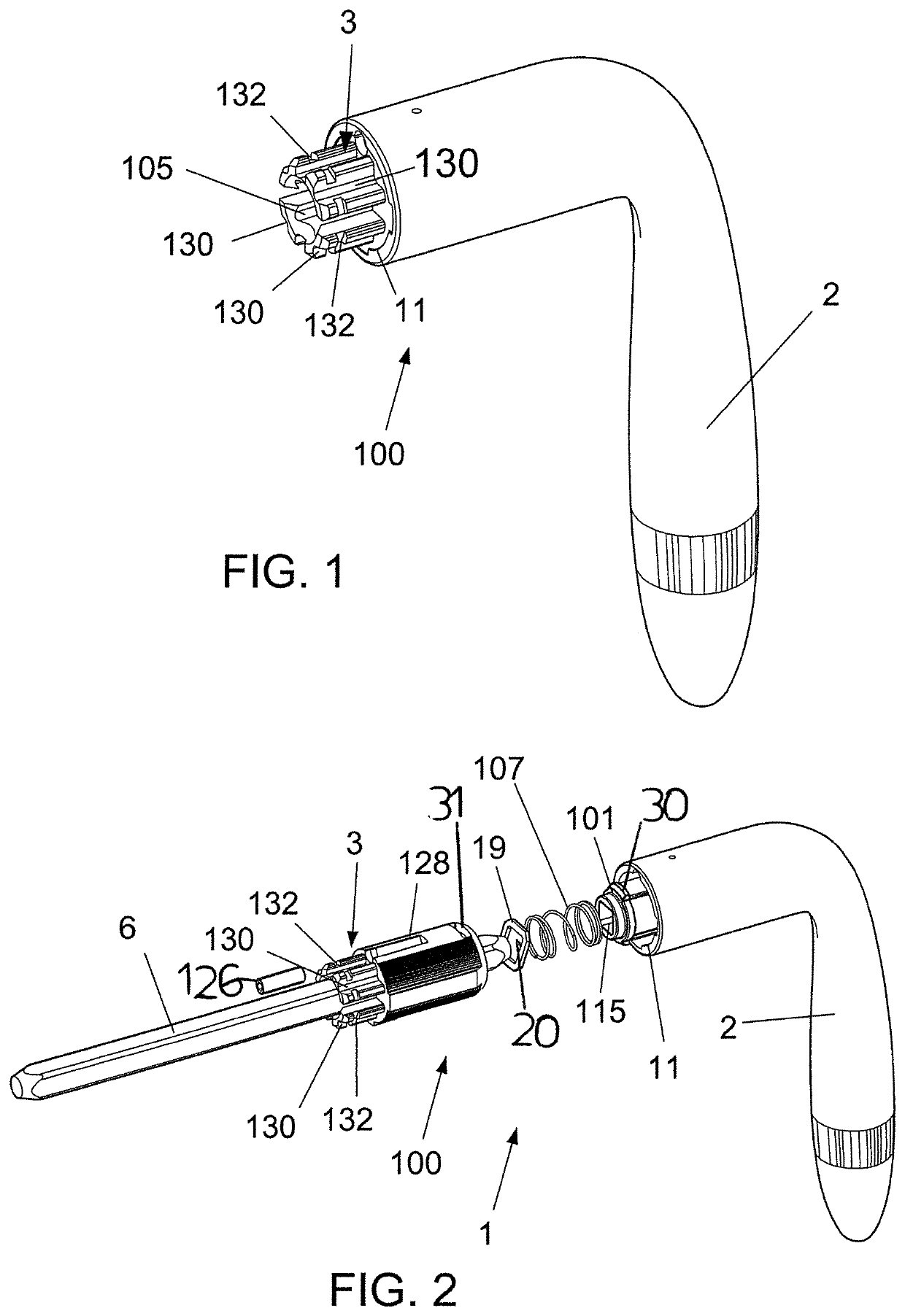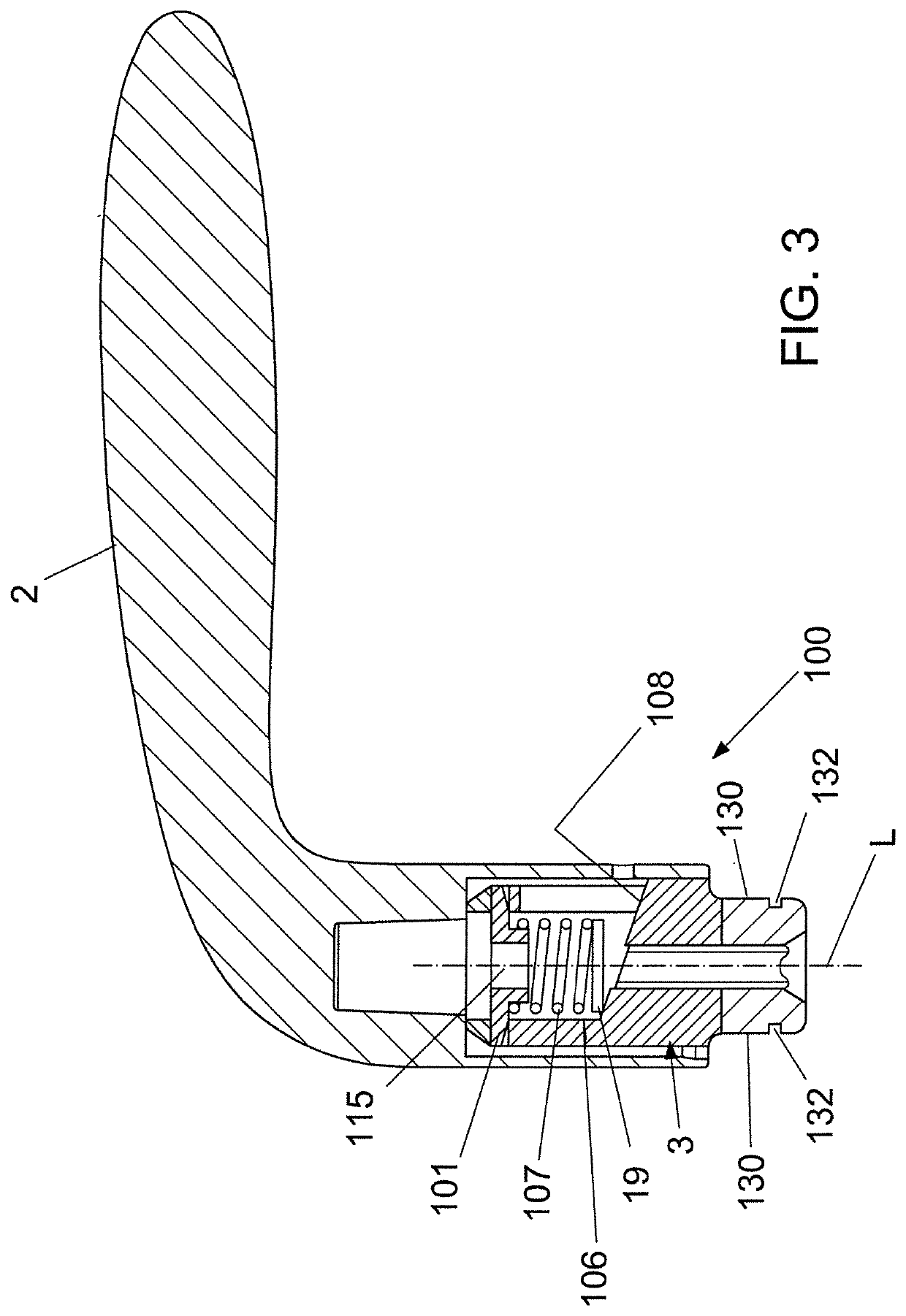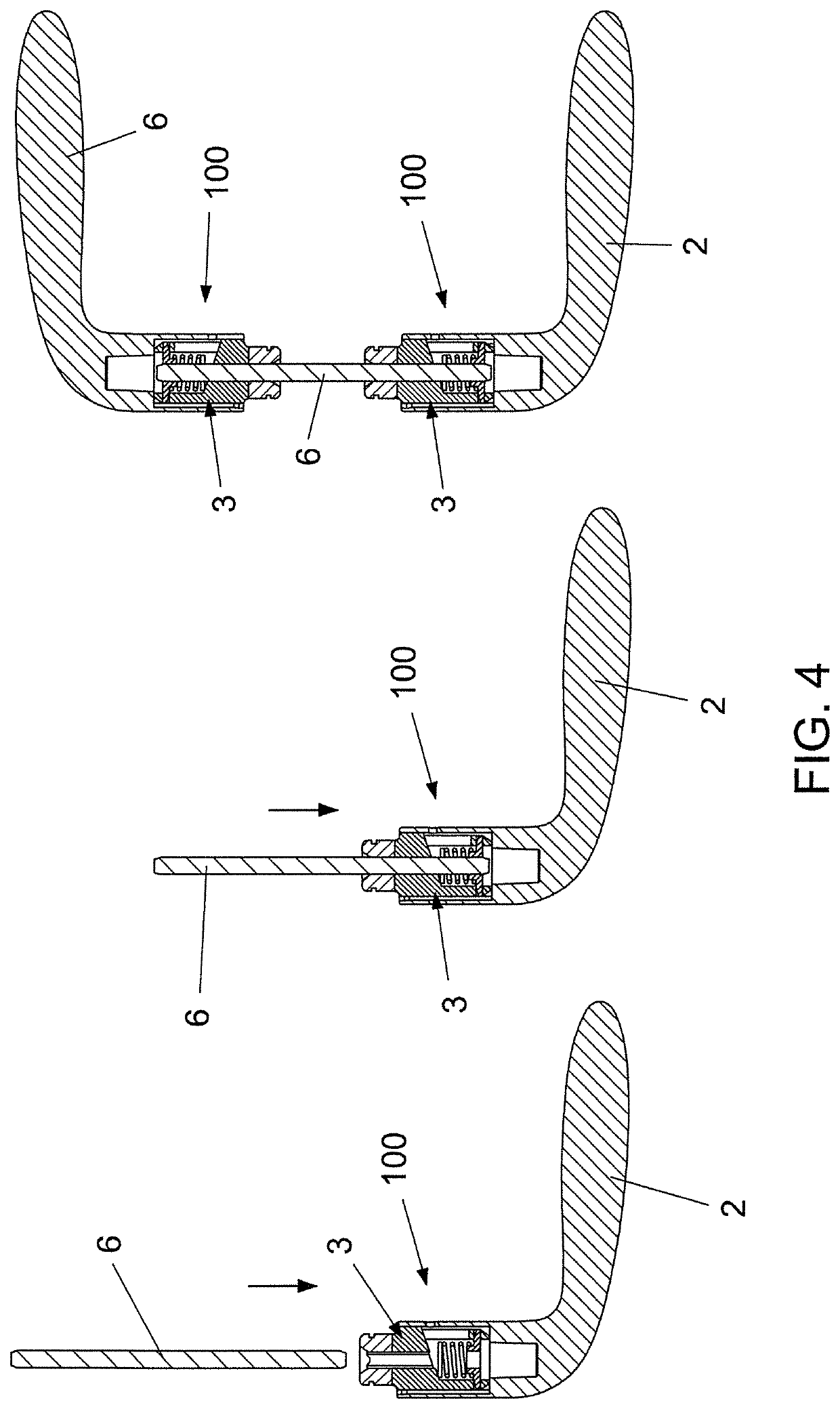Manual control device of the opening and closing of the lock of a door or window
- Summary
- Abstract
- Description
- Claims
- Application Information
AI Technical Summary
Benefits of technology
Problems solved by technology
Method used
Image
Examples
Example
DETAILED DESCRIPTION OF THE DRAWINGS
[0040]The control device 1 comprises a control rod 6 or lock control follower (not shown) arranged through a transversal hole 7 of the leaf 5, and two identical parts 100, one engaged with the section of the control rod 6 projecting from the right side of the leaf 5 and the other one engaged with the section of the control rod 6 projecting from the left side of the leaf 5.
[0041]In any case the control device can also have a single part 100, where the actuation of the lock is requested only on one side of the leaf 5.
[0042]Reference will now be made to every single part 100.
[0043]The part 100 comprises a longitudinal support body 3 longitudinally having a cavity 105 through which the control rod 6 is arranged, a rotatable manual gripping member 2 having a housing 11, and at least one quick blocking element of the axial extraction of the support body 3 from the control rod 6.
[0044]The manual gripping member 2 can be, as shown, in the form of a handle...
PUM
 Login to View More
Login to View More Abstract
Description
Claims
Application Information
 Login to View More
Login to View More - R&D
- Intellectual Property
- Life Sciences
- Materials
- Tech Scout
- Unparalleled Data Quality
- Higher Quality Content
- 60% Fewer Hallucinations
Browse by: Latest US Patents, China's latest patents, Technical Efficacy Thesaurus, Application Domain, Technology Topic, Popular Technical Reports.
© 2025 PatSnap. All rights reserved.Legal|Privacy policy|Modern Slavery Act Transparency Statement|Sitemap|About US| Contact US: help@patsnap.com



